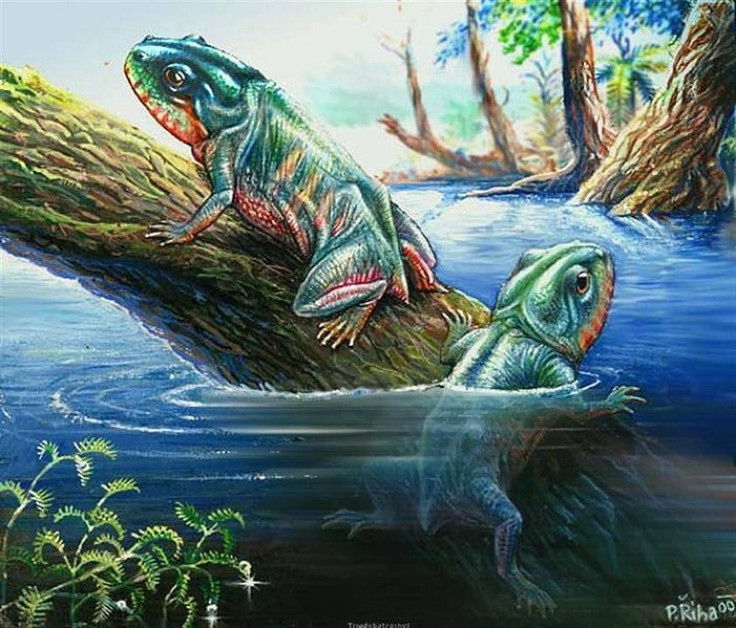How Fish Fins Evolved Into Mammal Limbs: The Genes Were There, They Just Had To Be ‘Clicked’

Scientists have long believed that life on Earth emerged from the oceans hundreds of millions of years ago when our aquatic ancestors evolved to live on dry land. But how did fish develop limbs in the first place? It’s a question that has perplexed scientists for decades, but a new study is elucidating the enduring mystery of how life on Earth found its legs.
How did the bony radials of fish fins become the fingers and toes of terrestrial amphibians, reptiles, birds and, eventually, mammals? Researchers in Switzerland believe they’ve found the answer. Their study, published in the journal PLOS Biology, concludes that the genetic blueprint for tetrapods' limbs were part of the genetic makeup of ancient fish species long before there were amphibians.
“The basics of the regulatory mechanism are there in the fish,” geneticist Denis Duboule of the University of Geneva and Federal Institute of Technology in Lausanne, Switzerland, told the Los Angeles Times. “Everything is there; you just need to click it, and then it goes into the genes."
It is commonly believed that our earliest land-walking ancestor emerged from the water some 350 million years ago – although some estimates say the transition occurred as early as 1 billion years ago. Amphibians first evolved from bony-finned fish during the Devonian period, between 419 million and 359 million years ago, and spawned new branches on the evolutionary tree of life that brought us to where we are today.
Researchers found that both fish and land animals possess bits of DNA called Hoxa and Hoxd genes. Hox genes are responsible for arranging an animal’s body structure during embryonic development. In mammals, something called a "bimodal" three-dimensional DNA structure kicks in that directs the growth of arms and paws, a structure that is absent in fish.
To figure out where land mammals evolved the genes for this subdivision between arms and paws, scientists looked closely at the genetic processes involved in fin and limb development. They compared the behavior and structure of these Hoxa and Hoxd gene clusters in mice and zebrafish, a tropical freshwater fish native to the Himalayas, specifically during the embryonic state.
“Hoxa and Hoxd genes are essential for the specification of the different limb segments, and their functional abrogation leads to large truncations of the appendages,” the authors wrote. “Here we show that the selective transcription of mouse Hoxa genes in proximal and distal limbs is related to a bimodal higher-order chromatin structure, similar to that reported for Hoxd genes, thus revealing a generic regulatory strategy implemented by both gene clusters during limb development.”
In layman’s terms, fish don’t use the gene for developing limbs correctly, and therefore don’t grow arms or legs.
"A good metaphor for what has probably happened would be the process of 'retrofitting,' as is done in engineering to equip outdated machine frames with new technology," Joost Woltering, one of the researchers on the project, said in a statement. "In this case, it was a primitive DNA architecture that evolved new 'technology' to make the fingers and toes.”
Previous research into mammalian limbs has provided some answers about the origin of limbs. A study published earlier in January looked at the fossils of an ancient fish species called the Tiktaalik roseae, found in the Canadian Arctic. Researchers discovered that partial pelvic fin material from the fish were similar to those of several early tetrapods, including a ball-and-socket hip joint.
Scientists said the ancient fish is one of the best examples we have of life’s transition from ocean to land.
© Copyright IBTimes 2024. All rights reserved.












